
| Cave Formation | |||
| Training & Safety | |||
| Equipment | |||
| Projects | |||
| Papers | |||
| Photos | |||
| Video | |||
| Links | |||
| Contact Us | |||
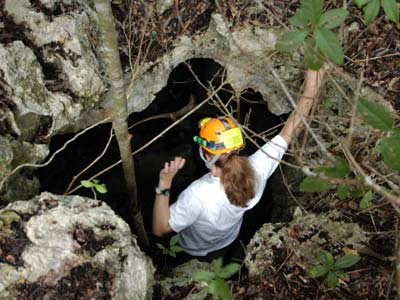
Although the majority of caves in our area of the Yucatan do not require vertical equipment (ascending/descending devices), this does not mean that protective/safety gear is not essential. Just as it is foolish to dive in the underwater caves without proper equipment, it is equally so to tackle any dry cave without a helmet and lights.
The inside of a caving helmet is insulated to help prevent injuries resulting from bangs to the ceiling (more common that one might think), falling rocks or debris, or falls from heights. Caving helmets are designed so that primary lights can be secured to them.
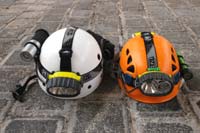 |
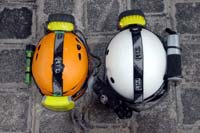 |
|---|
With primary lights, there is often a trade off between luminosity and burn time. Though one typically carries spare batteries, changing them in a cave is rarely convenient. Some cave lights have a dual setting: regular and LED, the latter offering a “bluer” but less powerful light with longer burn times.
The majority of cavers put a back-up light on their helmet. This way, if a primary light fails, one can still keep hands free. Another back-up light is also put into a pack. The cave diving rule of “Three Lights” derived from the dry caving practice; it is quite dangerous to be in a cave without a light source.
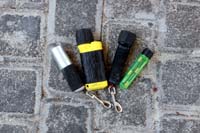 |
|---|
Dry caves often have small passages, low ceilings, and rocky floors; knee pads, elbow pads, and gloves make crawling through caves less painful.
Caving packs are designed to carrying items into caves and to take a fair amount of abuse. They are mainly worn as backpacks but are often dragged through smaller passages. Sometimes gear is dropped along route; some manufacturers create packs which can be reduced in size.
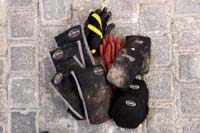 |
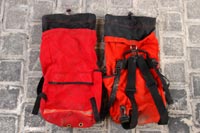 |
|---|
Rope is needed for hand lines and vertical drops (For the latter, a type of static rope, such as that manufactured by PMI , is recommended.). One should always consider the condition and storage methods of any rope before using it as a safety device. Rope protectors should be used as a cushion between rope and any surface which might abrade it.
Rope bags are designed to protect the rope in transit and in storage. Some are designed to be thrown down a hole before descending.
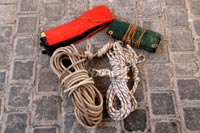 |
 |
|---|
Dry caving is a relative term, as a large percentage of “dry” caves have water in them: some sump into sizeable underground passages, requiring cave diving or slightly modified cave diving equipment; others can be waded, snorkeled, or swum. Depending on exposure time and/or comfort level, wetsuits or snorkeling vests may be needed. Caution is especially advised in any wet environment with low ceilings.
Caves are often located in the jungle, which means that additional provisions must be brought. Trails to the caves must be cut―machetes carried. Failure to bring sufficient fluids and an emergency medical kit into the jungle can prove a fatal mistake; failure to bring insect repellent only feels like it!
